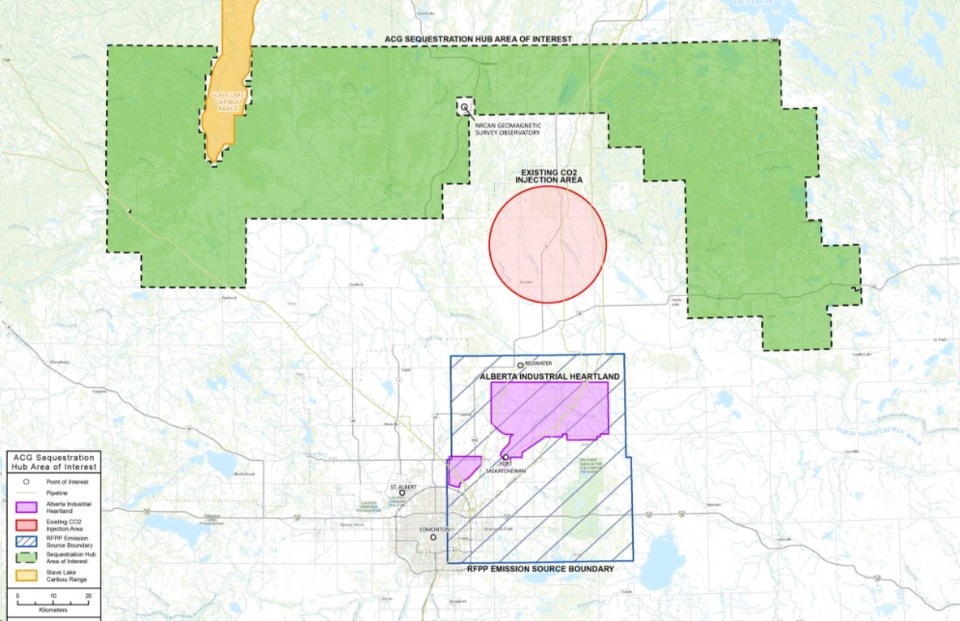BARRHEAD — A small portion of the County of Barrhead, Westlock County and Athabasca County may one day be part of a proposed “carbon storage hub” being developed by two major oil and gas companies, Pembina Pipeline and TC Energy.
That was one of the findings presented to County of Barrhead councillors at their July 18 meeting, where they passed a motion to request a presentation from the developers of the ACG at a future council meeting.
Back in October, the county had received a letter from Pembina Pipeline and TC Energy announcing they had entered into a carbon sequestration evaluation agreement with the Alberta government allowing the Alberta Carbon Grid (ACG) to move forward.
Council then passed a resolution asking administration to collect further information about the ACG and bring back a report.
Carbon capture, utilization and storage (CCUS) is a collective term used to describe the various methods of trapping carbon dioxide produced by the burning of fossil fuels.
Alberta has been utilizing carbon storage on a commercial scale since 2015, with the Alberta Carbon Trunk Line and the Quest Carbon Capture and Storage Project being two notable examples.
The province has been wanting to expand further into carbon storage to diversify the energy sector and support the transition to a net-zero electricity grid.
However, as pointed out by county manager Debbie Oyarzun, "the province isn’t just allowing anyone and everyone to go out and try to capture carbon.”
She added, “They are actually assigning rights, and the way to do that is they're having these proposals submitted and then they’re picking the top couple of applications … and saying, ‘OK, we trust that you understand this; go out and prove that you can do it.’”
The letter that the county received in the fall was the result of the province selecting six proposals to begin exploring how to safely develop carbon storage hubs, Oyarzun indicate.
The ACG’s proposal is to create such a hub in an area covering 900,000 hectares, with the CO2 being trapped inside underground porous rock formations.
Though the initial focus will be around Smoky Lake, Oyarzun said, “We do have a little bit of our county that does fall within their area of exploration.”
As noted on the ACG’s website, the project has the potential capability to store up to 10 million tonnes of CO2 annually when fully developed.
Having now reported on what was happening with the ACG project, Oyarzun gave council two options: to accept the report for information or to request a presentation from the companies collaborating on the project.
They agreed it would be interesting to hear directly from the project overseers and directed Oyarzun to make that invitation.



